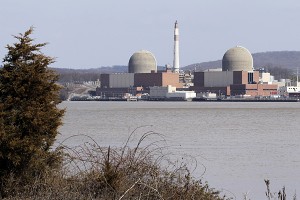When bad things happen, Americans often look to government for solutions. “There ought to be a law.” Conversely, we often bristle at overzealous laws and demand that government “stay out of our business.” We elect representatives who promise to pass laws, or repeal laws. But some laws are simply beyond their reach. We place too much faith in the power of government.
The law of supply and demand, for example, has been “on the books” for thousands of years – not because any government ever enacted it, but because it is human nature. Yet despite the lessons of history, Americans often try to change the realities of economics. More often than not, the unintended consequences are worse than the problem we were trying to solve.
Consider the mess we have made of energy policy by trying to create a better market for renewable energy. We have approached the problem with both a carrot and a stick. We provide billions in subsidies for wind, solar, geothermal, biomass, and other renewable energy – and we wage a regulatory war on coal, oil and gas. In 37 states there is a third approach, requiring utility companies to obtain a minimum percentage of their power from renewable sources. In my home State of Colorado, investor-owned utilities must generate 30 percent of their electricity from renewables by 2020, and coops must get 20 percent from renewables.
The details of renewable energy standards (RES) vary considerably around the country, and several States have recently run into a buzz saw of unintended consequences. The goal of RES statutes is twofold: to create a market for a product that is not profitable enough to evolve on its own (at least not quickly enough), and to reduce greenhouse gas emissions. It is that latter goal that has become problematic in many States.
 New York, for example, now wrestles with a terrible dilemma. The Empire State has a number of nuclear power plants, which address one of the two goals, but not the other. Nuclear power is not renewable (it requires uranium mining), but it accomplishes the other goal because it is virtually carbon free. Yet when New York adopted its RES, it began a chain of events that has caused significant reductions in the profitability of nuclear plants. Several are now on the verge of shutting down because of the glut of new electric power on the market – a supply that often exceeds demand. If nuclear plants are allowed to close, two things will happen to New Yorkers. Their utility bills will increase because the newer power sources are considerably more expensive to build and operate, and their carbon emissions will rise because it will increase their reliance on natural gas. You see, there are frequent gaps in renewable generation when the sun doesn’t shine and the wind doesn’t blow. Those gaps can be filled with reliable 24-7 power from nuclear plants, or they must be filled by traditional fossil fuel plants.
New York, for example, now wrestles with a terrible dilemma. The Empire State has a number of nuclear power plants, which address one of the two goals, but not the other. Nuclear power is not renewable (it requires uranium mining), but it accomplishes the other goal because it is virtually carbon free. Yet when New York adopted its RES, it began a chain of events that has caused significant reductions in the profitability of nuclear plants. Several are now on the verge of shutting down because of the glut of new electric power on the market – a supply that often exceeds demand. If nuclear plants are allowed to close, two things will happen to New Yorkers. Their utility bills will increase because the newer power sources are considerably more expensive to build and operate, and their carbon emissions will rise because it will increase their reliance on natural gas. You see, there are frequent gaps in renewable generation when the sun doesn’t shine and the wind doesn’t blow. Those gaps can be filled with reliable 24-7 power from nuclear plants, or they must be filled by traditional fossil fuel plants.
New York State leaders have struggled with this predicament for months. An obvious solution might be to reduce the RES and let the market stabilize, thus returning profitability to the nuclear plants that are so important to the State’s power mix. Instead, Governor Andrew Cuomo proposes the classic liberal solution: raise everyone taxes, and artificially subsidize the nuclear plants. His Administration has ordered a surcharge on electric bills for homes and businesses totaling $962 million in the first two years. It will be well over $1 billion soon. And his plan will ratchet the RES up even further, to a 50 percent requirement by 2030 – compounding the problem, the need for more subsidies to keep nuclear alive, and higher taxes to subsidize it.
This matters because some apparently think this New York plan is a national model. A Reuters news story about it was headlined, “New York could show the way to rescue U.S. nuclear plants.” Even environmental groups are supporting the plan, not because they like subsidizing nuclear power, but because they know it may be the only way to save the artificial mandate for renewables. As Phil Kerpen of American Commitment has pointed out, “Without nuclear energy, the state will be unable to meet its own renewable energy use mandates.” A delicious irony.
Not every state has nuclear power plants, so this conundrum plays out differently in different areas. But no Americans have escaped the dramatically higher utility bills and other unintended consequences of their attempts to amend the law of supply and demand.
A version of this column originally appeared in the Grand Junction Daily Sentinel September 23, 2016.




Comments on this entry are closed.